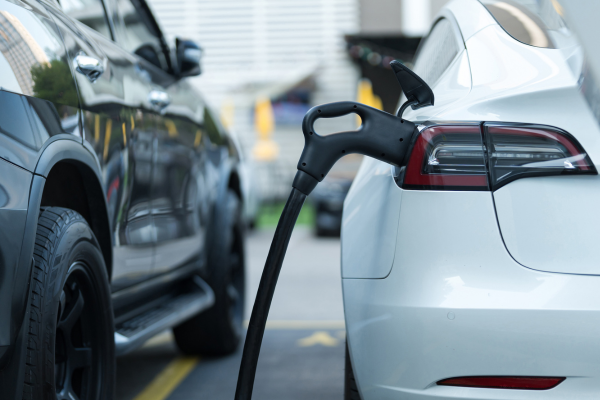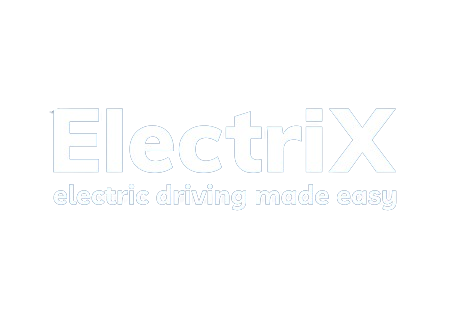In case you missed it see what’s in this section
Let's Talk

Fuelling Change: The Economic and Environmental Benefits of Hybrid and Electric Taxis
The modernisation of the transport sector is a critical pillar in the global effort to reduce carbon emissions and mitigate climate change. Among the frontrunners in this transition are hybrid and electric taxis, which offer a cleaner alternative to their petrol and diesel counterparts.
By adopting advanced technologies, these eco-friendly taxis are playing a pivotal role in diminishing the environmental footprint of urban transport. They not only symbolise a shift towards greener transport solutions but also reflect a broader societal movement to embrace sustainable practices. The benefits of hybrid and electric taxis extend beyond mere environmental considerations; they also encompass significant economic advantages which are reshaping the taxi industry in the UK and across the globe.
Emission Reduction: A Breath of Fresh Air
The detrimental impact of vehicular emissions on urban air quality is a pressing concern. Traditional taxis, powered by petrol or diesel engines, contribute significantly to the levels of nitrogen dioxide and particulate matter in the air. In contrast, electric taxis produce zero tailpipe emissions, while hybrid taxis generate considerably fewer emissions compared to conventional taxis. The adoption of these green alternatives is a stride towards improving air quality, particularly in densely populated urban areas where the concentration of taxis is high. Moreover, the reduction in emissions aligns with the UK’s ambitious goals to achieve net-zero carbon emissions by 2050. The tangible improvements in air quality also resonate well with the public, fostering a more positive perception of the taxi industry. By offering a cleaner, more responsible choice, hybrid and electric taxis are not only contributing to a healthier urban environment but are also paving the way for a more sustainable taxi sector.
Cost-Efficiency in Operation
One of the primary advantages of hybrid and electric taxis is their cost-efficiency. The cost of electricity is considerably lower than that of petrol or diesel, translating to lower fuel costs for taxi operators and, consequently, lower fares for passengers. Moreover, electric and hybrid vehicles are designed with fewer moving parts than traditional internal combustion engine vehicles, which often results in lower maintenance costs. The savings extend to repairs and replacements of parts such as exhaust systems, spark plugs, and oil filters which are commonplace in conventional vehicles but absent in electric variants. Additionally, the UK government provides various incentives to encourage the adoption of eco-friendly vehicles. These include grants and tax exemptions which significantly lower the overall operational costs for taxi operators. The financial benefits thus create a compelling case for the transition towards hybrid and electric taxis, illustrating a win-win scenario for both the environment and the economy.
Energy Efficiency: A Mile Further
In the pursuit of greener transportation alternatives, the efficiency of hybrid and electric taxis takes centre stage. One of the primary inquiries from potential adopters revolves around asking: what is the best hybrid car for taxis? The answer often encompasses a blend of fuel efficiency, reduced emissions, and operational cost savings. Hybrid taxis utilise a combination of internal combustion engines and electric batteries, maximising fuel efficiency by alternating between these power sources based on the driving conditions. On the other hand, electric taxis offer the pinnacle of energy efficiency with their sole reliance on electric power, significantly reducing the operational costs associated with fuel consumption. For those interested in making the transition you can find electric taxis for sale online and view the growing market and accessibility of these energy-efficient vehicles. The progression towards more energy-efficient taxis is not merely a trend but a meaningful stride towards sustainable urban transportation, embodying a conscientious move to lessen the environmental impact of daily commutes.
The Silence of Electrics
In the bustling streets of urban centres, the cacophony of engine noises from traditional taxis and other vehicles often contributes to the stressful ambiance of city living. The introduction of electric and hybrid taxis has marked a significant step towards reducing noise pollution, offering a quieter, more peaceful ride experience to both the driver and the passengers. The whisper-quiet operation of electric taxis, in particular, stands in stark contrast to the raucous combustion engines of conventional taxis. It's not just the serene ride that appeals to city dwellers; the reduction in noise pollution has broader implications for urban living quality. A quieter atmosphere contributes to less stress, better sleep, and an overall improved quality of life for city residents. The ripple effect of this quiet revolution extends to the ambiance of city streets, creating a calmer, more enjoyable urban environment. The silence of electrics, as it turns out, speaks volumes about the multitude of benefits brought forth by the adoption of cleaner, quieter taxi alternatives.
Charging Forward: Infrastructure and Technology
The advancement of hybrid and electric taxis is closely intertwined with the evolution of charging infrastructure and automotive technology. A robust and accessible charging network is fundamental to the operation of electric taxis, ensuring that they can efficiently serve urban areas without the anxiety of a depleted battery. Moreover, advancements in battery technology, including increased energy density and reduced charging times, are catalysing the shift towards electric taxis. On the other hand, hybrid taxis benefit from a blend of traditional fuelling and electric charging, providing a pragmatic transition path as charging infrastructure continues to mature. Furthermore, the integration of smart technology in these modern taxis, such as real-time energy management systems and autonomous driving features, enhances operational efficiency and passenger experience. The synergy between evolving automotive technology and improving charging infrastructure is accelerating the adoption of hybrid and electric taxis, heralding a new era of greener and more efficient urban transportation.
Public Reception and Awareness
The transition to hybrid and electric taxis is significantly influenced by public reception and awareness. As awareness regarding the environmental and economic benefits of these green alternatives grows, so does the public’s preference for them over traditional taxis. Moreover, educational campaigns and real-world experiences with hybrid and electric taxis are altering perceptions, portraying them as viable and preferable alternatives. The visual impact of seeing electric charging stations in urban areas, along with the quiet and clean operation of hybrid and electric taxis, reinforces the message of eco-friendliness and modernisation. Furthermore, positive testimonials from both taxi operators and passengers regarding lower operational costs and enhanced riding experiences contribute to a growing public endorsement. This gradual shift in public perception is crucial for the broader adoption of hybrid and electric taxis, as it fosters a conducive environment for policy support, investment in charging infrastructure, and the eventual normalisation of green taxis as a staple of urban transportation.
Navigating Challenges
Despite the promising trajectory, the journey towards widespread adoption of hybrid and electric taxis is laden with challenges. Initial investment costs can be a deterrent for taxi operators, especially when comparing the upfront costs of electric and hybrid vehicles to traditional petrol or diesel taxis. Moreover, the availability and accessibility of charging infrastructure in certain regions remain a hurdle, potentially affecting the operational efficiency of electric taxis. The pace of technological advancements, while impressive, also needs to keep up with the growing demand for longer battery life and faster charging solutions. Additionally, regulatory frameworks need to evolve to support and incentivise the adoption of greener taxi alternatives, ensuring a level playing field for operators keen on making the transition. Overcoming these challenges requires a concerted effort from stakeholders, including government bodies, the automotive industry, and the public. By addressing these hurdles head-on, the path towards a greener and more sustainable taxi industry becomes clearer, paving the way for a cleaner urban transport landscape.
Weather in Swindon
Listings



















